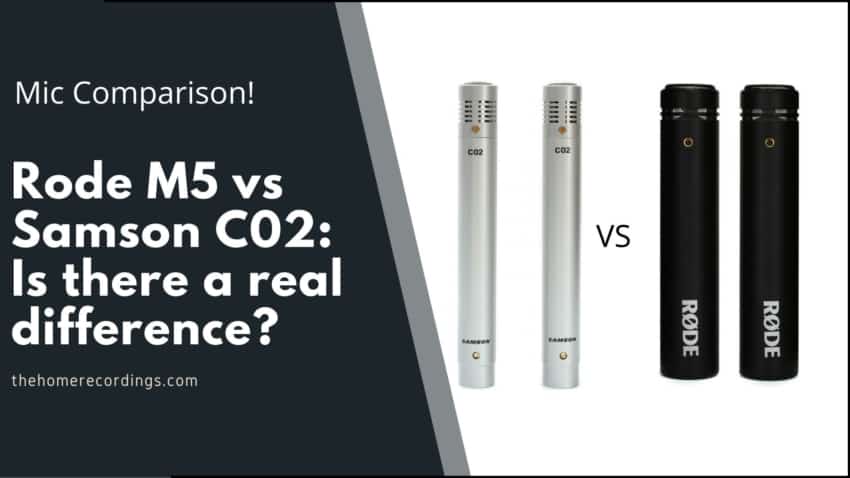Last updated on December 29th, 2023 at 09:55 pm
Both the Rode M5 and the Samson C02 are well-known stereo pair microphones mostly designed for small home studios, but they can also be found in some higher-end studios as well.
However, the Rode M5 costs almost twice as much as the C02, so this begs the question: Which one should you get?
So, in this article I will be going over the differences between these microphones, how they sound, their built-in features (if they have any at all), and which one you should go for depending on your needs.
Here’s the short answer of the differences between the Rode M5 and the Samson C02: The Rode M5 pair has an overall better sound, with the mids and highs sounding open and airy, and the bottom end sounding full without being muddy. Whereas the C-2’s low end isn’t as present and the higher end sound more “tinny” or “metallic”. However, the C-2’s only cost 1/4th the price of the M5’s.
Now, let’s start by taking a look at the Rode M5 first:
Rode M5
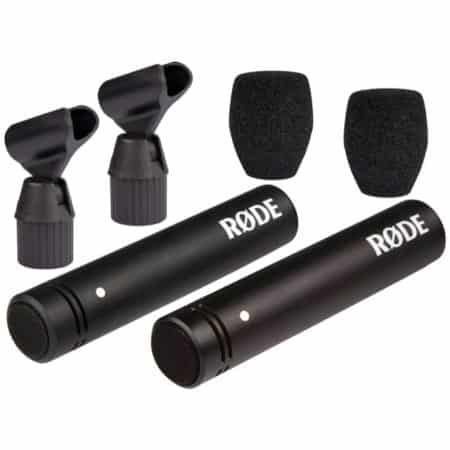
The Rode M5 is a small diaphragm condenser pencil style microphone that features a compact and light design with a sleek and strong black-matte ceramic coating.
Contrary to some other small diaphragm condenser microphones out there, the M5 only sells as a matched pair, and it’s generally priced around $200.
The M5 comes with a WS5 pop filter and a RM5 stand mount, which should help you keep those pesky plosives at bay. However, when recording spoken word or singing, please consider placing a real pop filter in front of it since the included ones aren’t really designed for it.
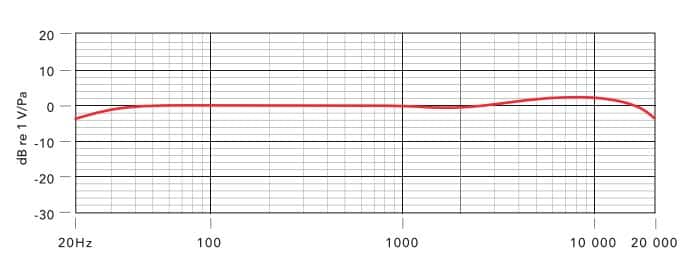
It captures a full frequency response range of 20Hz to 20kHz using a cardioid pickup pattern and it features a small boost in the 7kHz-16kHz range and it slightly pulls back around 20Hz-40Hz and around 18kHz.
The M5 requires +48v of phantom power to work, which luckily, most audio interfaces do provide. It’s worth noting that all small diaphragm condensers generally require phantom power, which is also the case for the Samson C02.
Lastly, the Rode M5 doesn’t come with a PAD or a High-Pass filter, which is actually quite common in small diaphragm condenser microphones in this price range.
How does it sound?
The Rode M5 pair excels in the mid and high frequencies in my opinion, since it doesn’t sound shrill or add any harshness or crispiness to the sound while still sounding open and airy, which is why it works great with guitars, percussion (especially overheads), strings, woodwinds, brass, pianos, and other similar instruments, as well as choirs.
However, one thing to note is that the M5 lacks a bit of presence in the bottom end which might leave the recording sounding a bit too thin.
Of course, this depends on the situation and what the mix requires, since you usually will remove some of that low end regardless when mixing loads of different tracks.
Small diaphragm condensers are known for having a very flat frequency response, which means that they take a pretty accurate snapshot of your sound without adding too much low-, mid-, or high-end.
As far as recording singing/spoken word goes, I have to say that I generally prefer large condensers for this specific job, however, the M5 does capture singing extremely well and you should find out for yourself if recording vocals with it suits your needs.
All in all, the M5 is a great-sounding and well-rounded microphone pair that doesn’t suffer from any glaring drawbacks.
What comes in the Box?
- 2x Rode M5’s
- Windscreens
- Mic stand mounts
Specifications
| Microphone Type | Small diaphragm condenser |
| Polar Pattern | Cardioid |
| Frequency Response | 20Hz – 20kHz |
| Output Impedance | 200Ω |
| Maximum SPL | 140dBSPL |
| Sensitivity | -34dB |
| Self-Noise | 19dB |
Find out more about the Rode M5 here:
- Rode M5: Amazon, Sweetwater.
Samson C02
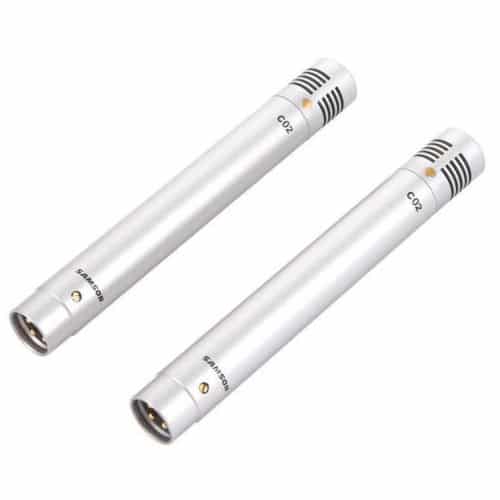
The Samson C02 is a small diaphragm condenser pencil style microphone that features a compact and sleek design with a silver-looking metal body and it’s very well built.
Just like the M5 pair, the Samson C02 also sell as a pair, but these are priced much cheaper than the M5’s and you should be able to get a pair for under $120.
In the box, you’ll not only find the two microphones, but a pair of windshields, as well as two Samson proprietary shock-mounts that are designed to absorb more vibrations and shocks than regular mic stand adapters, although I have to say that I didn’t find these to be as effective as marketed, especially not when compared to similar shock mounts, like the ones found on the Avantone CK-1.
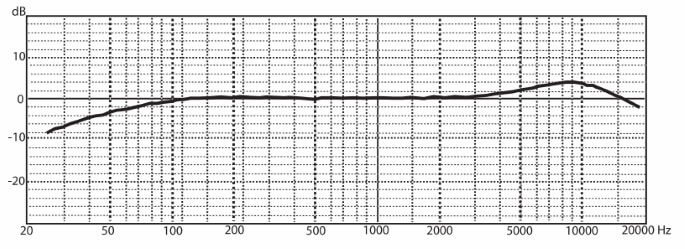
The C02 has a frequency response of 50 Hz to 20 kHz, which accurately reproduces audio with great detail while minimizing low-frequency noise. It features a slight low-end cut up to 100Hz and a slight boost between the 5kHz and the 15kHz mark, which gives it an airy and open sound, and all of this helps instruments to better sit in the mix without the need of as much EQ.
Lastly, just like with the Rode M5, the Samson C02 doesn’t come with a PAD or a High-Pass filter.
How does it sound?
I previously compared the Rode M5 to the Behringer C-2, where the M5 came out ahead by a mile, but this is not so much the case with the Samson C02 since it’s a much better and more balanced microphone than the Behringer C-2, meaning that it sounds a lot better and closer to what the M5 sounds like.
The low end is very present yet not muddy, giving it a full and warm sound. The mids and highs really do sound open and airy, and even a side-by-side comparison between the C02 and the M5 on my acoustic guitar sounded almost identical.
The C02 is definitely a great option that you should consider, and for the price, I think that it’s on of the best, or the best stereo pair you can get.
What comes in the Box?
- 2x Samson C02
- Windscreens
- 2x Shock-mounts
Specifications
| Microphone Type | Small diaphragm condenser |
| Polar Pattern | Cardioid |
| Frequency Response | 50Hz – 20kHz |
| Output Impedance | 200Ω |
| Maximum SPL | 134dBSPL |
| Sensitivity | -40dB |
| Self-Noise | 22dB |
Find out more about the Samson C02 here:
- Rode M5: Amazon, Sweetwater.
Differences between the Rode M5 and the Samson C02
The main difference comes down to the cost, since both microphones sound fairly similar and I don’t think that one could be considered as better than the other one.
I do think, however, that the Rode M5’s have a very slight advantage as far as the low-end goes, since to my ears it sounds a little clearer, but that’s about it!
My Recommendation
If I had to choose a pair to get for myself, I’d definitely go with the Samson C02’s since they cost about 2/3 of what the M5’s sell for and sound almost identical.
They both don’t feature neither a PAD or a High-Pass filter and the build quality is fairly similar. Which is why I don’t think that paying the extra $70 is worth it.
Here are links to where you can find the two microphone pairs:
- Rode M5: Amazon, Sweetwater.
- Samson C02: Amazon, Sweetwater.
